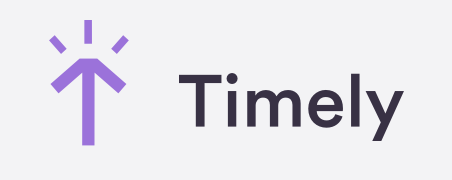How to Use Time Management Software to Stay on Track While Working from Home
A guide on how to use time management software to monitor and improve work from home productivity.
Working from home, it can be a challenge to manage your time effectively.
With dozens of distractions, the allure of procrastination, and the expectations of your work, it can be easy to succumb to idle time and struggle to settle on a productive routine.
In this guide, we’ll explore how to improve employee performance with an hours worked tracker. See how you can support employee performance optimization in a work from home environment and help them produce their best work even in the face of distraction.
Perform a Time Audit
One of the best ways to wrestle back control of your time is to know exactly how you and your team are spending it.
By carrying out a time or productivity audit with work at home monitoring software, you can establish when employees are most and least productive during the day. With a wealth of time data to analyze, you can pinpoint almost to the minute when each individual is most active and produces their best work.
Pinpoint Productivity Surges
Upon evaluating the productivity report generated by your time management solution or activity tracker for computers you might notice a correlation between getting up early and working through a number of tasks.
By validating this information in your project management software, you can put together a clear picture of:
- The app or websites used
- How much work was completed or signed off on
- The exact hours that most work took place
Now you know that getting up early is conducive to higher levels of output, so you can encourage the employee to frontload their days in the future to make sure they leverage this morning productivity surge every day.
Cut out Distractions
On the flip side of the coin, you can also use a time audit to find out when employees are at their least productive.
For example, let’s say you discover that there’s a distinct lapse in productivity from 3-4 pm for a team member most afternoons. After asking the employee about it, you realize that this is when they like to take a tea break and catch up with emails.
If you want them to make the most out of their time, it’s worth using the 80/20 principle to uncover what the few activities are that lead to the most optimal results. In this instance, it’s likely that the hour spent responding to emails isn’t moving the needle much.
Instead, it would be better to cut down the time spent responding to emails to 20 minutes and use the other 40 on tasks that help make the most meaningful progress. A restructuring of how the employee spends their time can all be it takes to get the most out of their day.
Use Time Management Techniques
If you have team members who express difficulties with staying focussed throughout the day with context shifting, new assignments, and notifications flooding in, it’s worth exploring time management techniques.
With the right techniques, you can help your team use time efficiently and make sure nothing throws them off track.
Time Blocking
Time blocking is one of the best time management techniques for adding structure and routine to the day. The technique involves mapping out exactly how you’ll spend your time for the upcoming week with color-coded time blocks.
Let’s say you have three reports to write for the week and they are the highest-priority task on your agenda. Instead of trying to tackle them whenever you have spare time and leaving space for distractions to steal your time, try blocking out time to work on them throughout the week.
If you’ve carried out a time audit and know you work best in the mornings, block out 2-3 hours of your time each morning to work on the reports. That way, whatever else comes your way during the week won’t affect your ability to work on your highest-priority task.
It’s worth getting as granular as possible to mitigate the risk of getting sidetracked.
Here are some activities to account for when blocking out time:
- Short, regular breaks including lunch breaks
- Time to respond to emails
- Meetings and other team commitments
Pomodoro
The Pomodoro method is an effective time management technique for achieving a lot in short bursts of time.
The time management equivalent of HIIT (High Intensity Interval Training), the Pomodoro method has you working hard for 30 minutes, and taking a break for 5. With this method, you can tackle challenging tasks without burning out.
Since we can only concentrate on tasks for a finite amount of time, the Pomodoro method can be useful for maximizing our attention and allowing for short periods to recharge.
The best part of this time management technique is you can customize it for any schedule and attention span. You could work for 45 minutes and take 10-minute breaks or work for an hour and take 15-minute breaks, depending on the type of work you do.
Maintain Your Schedule
Finally, time management software can be the glue that keeps your daily, weekly, or monthly schedule together.
In any work schedule, there’s likely to be a laundry list of different tasks to keep up with. They can include:
- Team meetings
- Email responses
- Daily check-ins
- Performance appraisals
- Team huddles
With so much to keep up with, it helps to schedule events in your calendar and set reminders.
Many time management solutions offer syncing with popular calendar tools, so you and your team members can easily add and view upcoming commitments. Plus, you can set reminders to ensure you don’t forget to show up to a meeting or deliver an assignment on time.
Screen monitoring software for pc like Insightful can help you coordinate and cooperate as a team. Companies that monitor employees and monitor activity on computers are in a much better position to allocate their resources effectively and make sure every team member has what they need to thrive.
When you use stealth monitoring software to collect time data on your whole team, you can understand when they’re most and least productive, what apps and websites they frequently visit, and what the best times are for getting together for team meetings.
You can also use employer monitoring of employee internet activity to inform workload distribution. If you notice signs that certain team members are struggling to deliver work on time and to the required standards, you can check in with them and evaluate the possibility of employee burnout affecting their performance.
¿Está listo para tomar el control total de su lugar de trabajo?
Pruebe la solución más sencilla hoy mismo...
Prueba Gratis.svg)
.jpg)




























%20(1).png)

.png)

.png)



.png)
%20(1)%20(1).png)
%20(1).png)